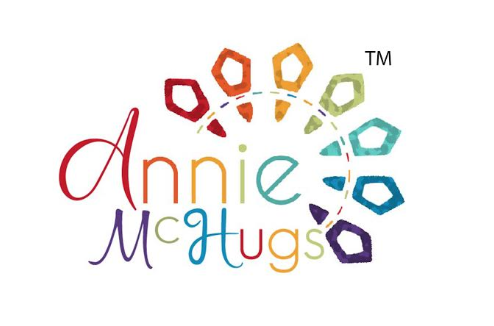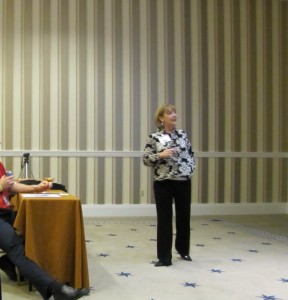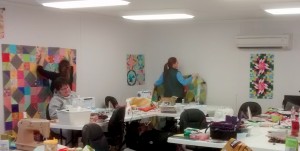Are you looking for quilting workshop best practices? Wouldn’t it be great if you were given the secret ingredients to make it an awesome workshop? Especially if the secret ingredients will boost your career? Make some egg money and get your name out there while allowing you to talk about what you love to do?
Guess what? I have a book full of tasty training morsels. A lifetime career and a Master’s degree in the field should, in most circles, qualify me to talk about how adults learn, the psychology of workshops (it’s so very different from school), how coaching adults is different than coaching kids; how to present to audiences so they will leave filled and not drained, and so much more.
Today’s Secret: Teaching someone something they want to learn and teaching it well creates loyalty. When working to grow your workshop business, loyalty is one of the BIG secrets. Once you have someone’s trust you build loyalty and Loyalty means repeat business. Loyalty means the participants will tell friends and word of mouth advertising is invaluable. Plus, loyalty means future sales whether it be another workshop or buying your first book.
It’s so important to do it well because if you bungle it, you might not get a second chance with those participants. Why? When we (all of us) pay for something like a workshop or a lecture, we want to learn something. We want a good experience. We want to walk away thinking that was worth our time and our hard-earned money.
Teaching a workshop means doing three things well: Preparation, Facilitation, and being focused on making sure the participant gets what they were told they would get.
To get some fresh stories of quilters attending workshops, I recently released a survey of quilters. Here’s just a snippet of what I heard:
87% of respondents have attended a quilting or crafting workshop, seminar, retreat or lecture in the last 12 months.
- Deciphered this means that people are looking for opportunities to learn, be together with other quilters and to add to their repertoire of skills.
- For you, as a workshop facilitator, that means: people are looking for instructors to offer great classes!
Then I asked “Remember that workshop that was AWESOME? What made it so grand?” I heard many things and today I’ll share this theme: “The teacher made it great. “ “The teacher was prepared and the instructions were easy to follow.” “She broke things down to a level using short examples.“ “There was a sense of connection.”
Now, let’s go back to loyalty. These comments tell me that the instructor/teacher/facilitator was prepared, worked hard at making the process easy to describe ending in easy to follow instructions and examples.
The comments also tell me:
- “There was a sense of connection” comment tells me that the instructor appeared to be relaxed. We will never know the level of anxiety the instructor had but she/he was either relaxed or paddling like crazy. Huh? Think of a duck floating across the smooth lake. It’s working hard paddling those webbed feet furiously underneath the water but looks calm gliding easily on top of the water. As an instructor, you can do it too. The comments above show me that the instructor worked hard to exude calmness even if she was paddling like crazy underneath. So, it holds true for you. Be Like a Duck.
- “The teacher was prepared and the instructions were easy to follow”. Never, ever, ever underestimate the importance of making the instructions easy to follow. How?
- Have a written plan. Write a script… yes, the pro’s have an Instructor’s Guide with every concept written out in script like form. Every step is written down and thought through. Every example is thought through; every instruction is studied to be sure it is the easiest way for the learner to understand. So, write a script. As a Director of Training and Development, it was a requirement to have a detailed instructional design plan with no more than 10 minutes of lecture in an hour, 40 minutes of demonstration or learner activity and 10 minute break. 10+40+10=60 minutes. Remember: people are there to learn. They do not want to hear you talk about the history of the beginning of the evolution of snails or whatever. Adults learn by Doing. So, let them DO things. Show them the first step and let them do it. Show/explain the next step…and let them do it. No talking heads allowed. It makes us mad or frustrated or bored or a plethora of things that will not help your career. (Oops, I get so passionate about this!)
- Then, Practice. Practice again. Practice until you do not need to read the instructions. Offer to do the course for a group of friendlies – maybe your bee? Maybe your guild? Pretend it’s a classroom of strangers. Get real feedback about how to improve.
- Hire or barter with someone to coach you. Coaches will help you organize your materials, guide you on your presentation skills and give you honest feedback. (I’m one of those coaches, btw.)
- “She broke things down” illustrates another key ingredient. The goal is to have the right amount of material to maintain a steady pace. Stop when you need to break things down and then move on. This means monitoring the group, being aware of their progress and their frustrations. Stress goes up and learners get frustrated when they feel rushed. Likewise they get bored when going to slow. So, keep moving but don’t rush and break things down to help them move through it.
If you do these things: appear to be calm and connect with participants, and if you use a great plan with great examples and break things down you will likely have a successful class. Successful participants mean you’ll build trust and loyalty means repeat business.
I know I’ve stirred up some questions. So, feel free to ask. I will answer. I’m looking forward to mentoring you!
Annie



awesome! thank you!
You are so welcome!
This really piqued my interest! I will be looking for a job soon, part or full-time, and I’m wondering if this might be one area I explore. I’m not plugged in to a local quilt store so how do I find out what kind of class is needed? Or do I find what I’m good at and see if a local quilt store needs my ability to teach a class? Thank you
Terri, It’s so great to hear from you. I apologize for the tardiness in responding. No excuse for letting that happen…I just lost focus. To answer your question…I’ve trained people to teach adults for 30+ years—it was my career. I could write
books, no wait: Encyclopedias about the topic. Here’s what I would advise: Think about these things: What skills do I have that others want to learn to do? (The best teachers are the ones who have done it.) Do I really love helping others learn? (The best teachers focus on how much the learners/students learn. If managing a class of 8 chatty women who are at all different levels of ability stresses you out…then maybe teaching is not your gig. However, if it is a delight, go for it.) And lastly, ask yourself: Is this the best way for me to serve others? Seriously. We are happiest when we find OUR best way to help and serve others. I say…if you answer yes to all of the above: the GO FOR IT!